Running a small business is no easy feat—especially right now. Over the last two years, small businesses have adapted through a pandemic only to emerge into some troubling economic uncertainty.
But small businesses are strong. And they’re vital. Vital to our communities, our economies, and our families. Nearly half of all Americans are employed by small businesses. I know firsthand just how important small businesses can be, watching my parents run a small business for over 50 years that supported and provided for our family.
One of the best ways to overcome a challenge is to meet it head-on. So we wanted to break down the top challenges small businesses face today and provide some actionable tips to overcome each of them.
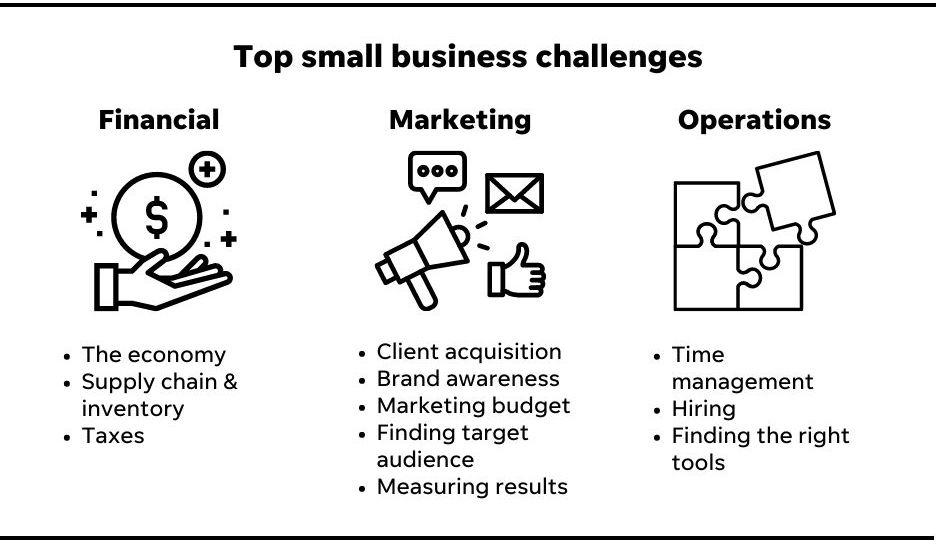
Table of contents
Financial challenges
In order to have a successful small business, you need to make money. While it’s a simple concept, there are many factors that determine how much money your business makes or will make within a fiscal year. That’s why financial challenges are among the top that small businesses face.
The economy
Right now, many experts fear we’re either in or will soon be entering a recession. A recession is defined as “a significant decline in activity spread across the economy, lasting more than a few months” (and is officially declared by the National Bureau of Economic Research).
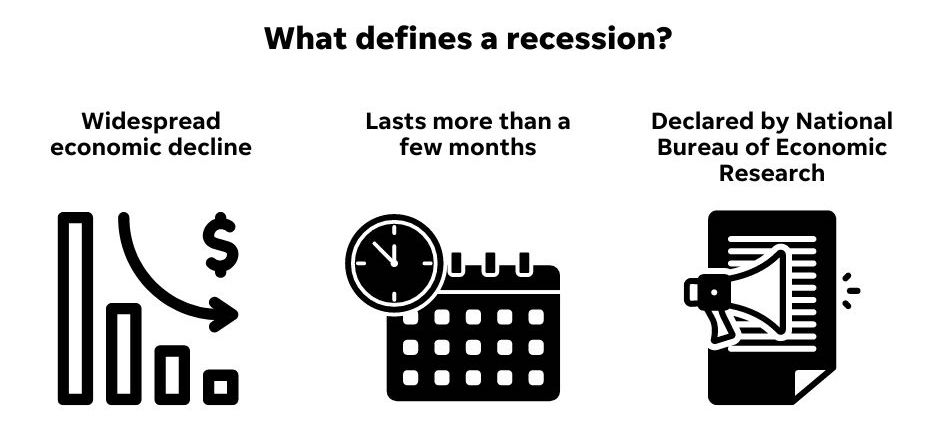
While small business owners can’t predict what will happen with the economy in a given year, there are signs to watch out for and plans that can be made to prepare.
How to address this challenge:
- Keep a close eye on economic trends. As a small business owner, it’s important to keep up with what’s happening in the economy as it will impact you in some way.
- Focus on your customers. The best way to ensure your business is successful through economic uncertainty is to develop loyal customers. Make sure you’re identifying key customer needs and addressing those needs through your products and services.
- Carefully manage your cash flow. When it comes to your small business’s budget, there are likely opportunities to shift or cut back. Identify the areas where you can save—such as with suppliers or cutting unnecessary subscriptions.
Get more tips to recession-proof your business here.
Supply chain and inventory
In 2022, one particular challenge small businesses have faced is supply chain and inventory issues. This has left many small business owners scrambling for inventory or without items necessary to keep their businesses running.
While this small business challenge will likely continue into 2023, there are some ways you can address it.
How to address supply chain challenges:
- Stock up as you’re able. If an item or material that your business needs becomes available, it might be a good idea to stock up on it while you can. This will give you peace of mind down the road.
- Track inventory. This is probably something you’re already paying close attention to. But keeping an eye and closely tracking your inventory can help you avoid unwanted delays or shortages.
- Communicate with customers. Customers understand that supply issues are happening. If you’re able to get an ETA from your supplier on when something will be back in stock, make sure to let customers know. If something you provide seems like it will be selling out soon, let customers know about this too.

Taxes
Taxes can be stressful for personal filings, so compiling and filing taxes for a small business can be even more of a challenge. You have to navigate tax laws, tracking expenses, and payroll, which can add a lot of complexity. It’s no wonder that taxes are consistently reported as a top small business challenge, with over 50% of small business owners saying tax preparation is complicated.
Here are some tips for how to overcome this small business challenge:
- Stay organized. This means organizing business expenses, invoices, payroll, etc. It’s a lot to keep on top of, which is where accounting software can help.
- Separate personal and business expenses. One of the biggest errors small business owners make when it comes to filing taxes is not separating personal expenses from business expenses. This is often done in error, which is why staying organized and keeping on top of your personal expenses and tax records can help you when it comes to filing taxes for your small business.
- Outsource if possible. With changing tax laws and a lot of moving pieces, this is one of those challenges that may be best faced with help from a professional. You might choose to work with an accountant to help solely with filing taxes or use online accounting software for help with filing.

Marketing challenges
In order to grow your business, you need marketing. Here are some top marketing challenges small businesses face and how to overcome them.
Getting new customers
What’s the ultimate goal of marketing? To get new customers. Easier said than done though, right? Getting new customers is a consistent marketing challenge for businesses both large and small. In fact, HubSpot found that nearly 50% of marketers reported generating traffic and leads as their top marketing challenge.
Luckily, there are plenty of ways to address this challenge. Here are some ideas:
- Run search advertising. Search advertising is one of the best ways to get your business discovered by your most likely customers. A good search advertising campaign puts you in front of people searching for your products and services in your area, which can help you get new customers.
- Invest in an effective website. Pretty much all your marketing tactics will lead potential customers to your website. That’s where they can take the next step to contact you and become a customer. Without a well-designed, user-friendly website, you’ll likely miss out on many potential new customers. Invest in a mobile-friendly website with multiple ways customers can contact you, including click-to-call, live chat, and a contact form. (And make sure your website is SEO-friendly!)
- Create a referral program. Your existing customers can be one of your best options to get new customers. By launching a referral program, you can incentivize happy, loyal customers to send their friends and families your way. Learn more about how to run a customer referral program.
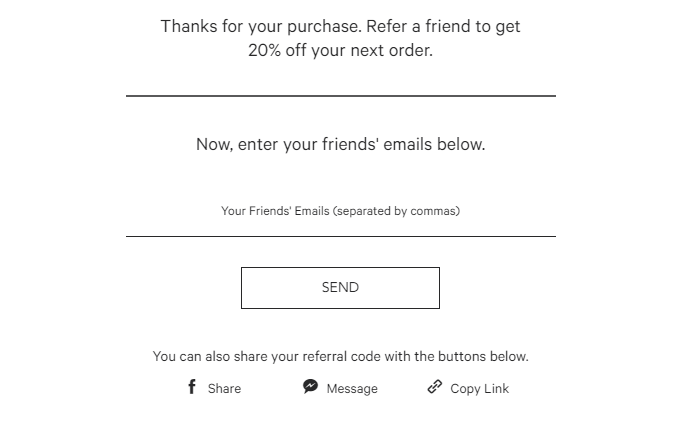
Related: We share even more ideas for how to get new customers here.
Increasing brand awareness
It’s hard to get new customers if they aren’t aware your business exists in the first place. That’s why brand awareness is so important. But this can be a small business challenge because it’s hard to compete for attention against larger companies and other similar businesses in your area. Especially when there are so many different places people are searching for businesses.
Increasing brand awareness comes down to knowing the right strategies. Here are a few to try.
- Run display ads. People need to see information about a business 7-10 times before taking an action. Display ads get your business on sites people frequent so you can increase awareness.
- Create an email newsletter. Email marketing is a great way to stay top of mind with existing customers and reach a new audience. A regular newsletter can build awareness for your brand by providing educational information, business updates, or discounts that will drive recipients to your business.
- Get active on social media. 54% of people use social media to search for new products or businesses. Establishing a presence on social media and actively posting to keep your audience engaged can help you increase brand awareness and potentially convert some social media followers into real customers.
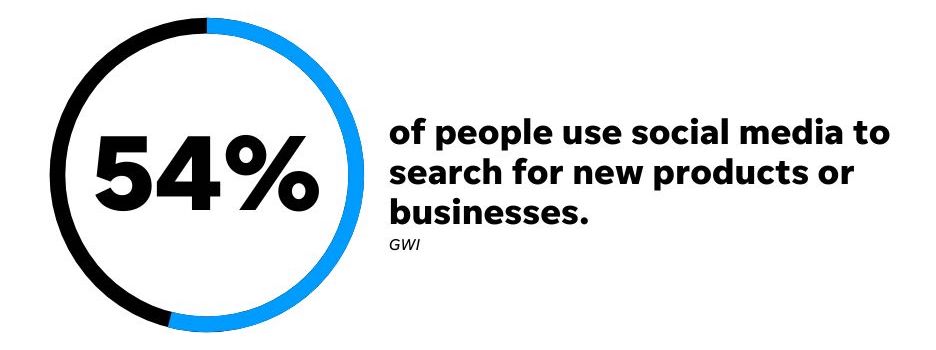
Make sure to measure your brand awareness strategies so you can see what’s working and where you may need to pivot.
Marketing budget allocation
After determining a marketing budget, you have to do the hard work of allocating that budget across the various channels where your business needs to be. This can be a challenge as budgets are set and spent differently across channels, and you may not know what works for your business at first.
Here are some ways to overcome this challenge.
- Set clear goals for your marketing. You can set goals by channel, tactic, campaign, or for your overall marketing. But by identifying what you’re trying to accomplish, you can better understand the marketing strategy (and the budget required) that will help you reach those goals.
- Measure your campaigns across channels. By keeping track of your marketing performance, you can better understand where your budget is being spent well and where you may need to pivot (or increase for better results).
- Outsource when needed. Outsourcing your marketing or getting help with your marketing can alleviate this small business challenge. A marketing vendor can advise on where and how you should spend your marketing budget and then take that budget and best allocate it across the chosen channels.

Related: Learn about how our cross-media optimization technology can simplify budget allocation across channels.
Understanding who to target (and how to reach them)
Another common small business challenge is knowing who you’re trying to reach with your marketing and where you need to reach them. But this is crucial information. Without it, it’s nearly impossible for your marketing to truly be successful and drive meaningful ROI.
Here are some ways to overcome this challenge and better understand your audience.
- Narrow down your target market(s). Your target market is the group of people most likely to buy from you. Outlining exactly who fits in your target market, including demographic information, interests, and behaviors, can give you a great starting point in identifying who you’re trying to reach. (Get 11 target market examples to help with this exercise here.)
- Understand where your customers spend time online. Once you know who you’re trying to reach, you’ll want to figure out how to reach them. Understanding where they spend time online is a great place to start. Are they frequenting using social media sites like TikTok or Snapchat or are they spending time reading news articles and special-interest blogs? Knowing the answers to these questions will help you identify the marketing channels you need to incorporate into your strategy.
- Take a cross-channel approach. Because people spend time all over the place online, a cross-channel marketing strategy is still the most effective. This gives you the best chance of reaching your audience no matter where they’re spending time and delivering a unified experience that can strengthen brand awareness.

A target market example that can help you narrow down your audience.
Measuring marketing success
With so many different marketing channels and different goals for each channel or campaign, it can be difficult to measure success.
Here are some ways to overcome this challenge.
- Understand the most important metrics. Some metrics are more important than others. When it comes to your search advertising campaigns, you probably care a lot more about how many leads you’re getting than how many times your ad was shown (unless you’re not getting any leads, then that’s important). By narrowing in on the most important marketing metrics, you can better pinpoint the actual performance of your campaigns.
- Stay on top of reporting. As a busy business owner, it’s easy to let some things fall by the wayside. But your marketing reporting shouldn’t be one of them. Letting your marketing run without any oversight can result in wasted spend and not-so-great results. (This is where unified reporting can help so you don’t have to pull and analyze reports from a million different sources.)
- Use a CRM. You can have the most effective marketing in the world, but if you’re not converting your marketing leads into customers, then it’s not really contributing to your bottom line. A CRM can help you track and stay on top of leads so you’re making the most of your marketing.
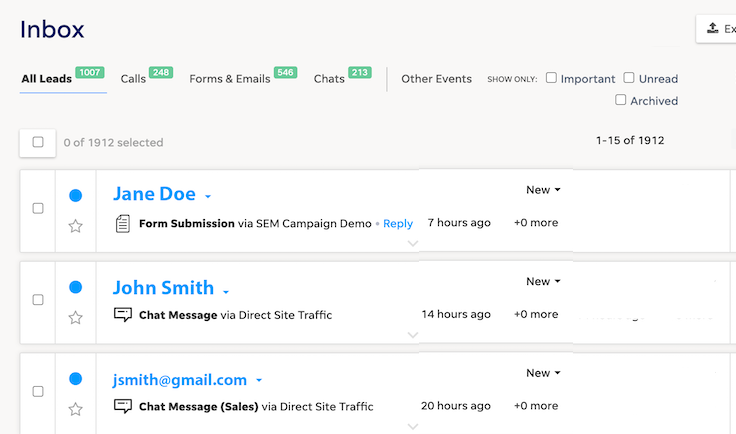
General and operational business challenges
Small business owners have to be well-versed in so many areas, we couldn’t miss out on ideas to address these additional small business challenges.
Time management
One survey found that 43% of business owners reported “always being on the job” as their biggest challenge. And one report found that 33% of small business owners work over 50 hours a week, and 25% work over 60 hours a week. When you run or own a business, you have a lot of responsibility, and it takes a lot of time.
But there are some ways you can carve out some time for yourself and take a breather from time to time:
- Get some things off your plate. Think about the aspects of running your business you either don’t love or aren’t an expert in and find ways to outsource them.
- Create work/life balance. This is easier said than done. But you don’t want to get burnt out running your business. In fact, 40% of business owners cited “avoiding burnout” as their top challenge. Set aside some time for yourself to do something you enjoy or spend time with loved ones. (Get actionable tips to create work/life balance)
- Hire the right team. When you have a team that you can trust to run your business (almost) like you would when you’re not there, you can alleviate a lot of stress and pressure on yourself.
Hiring
Speaking of hiring the right team, this is another challenge small businesses are facing currently. With high demand for workers, it’s getting more and more competitive to hire people. But it’s not impossible.

Here are some ways to overcome this challenge.
- Do recruitment marketing. Recruitment marketing strategies like cultivating employee reviews, creating a careers page on your website, and running advertising for open jobs can help you stand out and find the right talent—even in a tight market.
- Ask for employee referrals. Your employees are your best source for new talent. Create an employee referral program where current employees are rewarded for bringing in new hires.
- Treat your people well. You want your employees to love your small business and help it thrive. So it’s important to treat your team well, create a positive work culture, and support your team when needed. This can also translate into more employee referrals and reviews.
Related: Find out how to overcome recruiting challenges and hire the right employees.
Choosing the right tools
There are so many different facets of running and owning a business. It’s a lot to keep up with. Thankfully, there are plenty of tools that can streamline processes and make some of the items on your never-ending to-do list a little easier.
Here are some ways to overcome this challenge.
- Identify what areas tools can help with. Having trouble creating social media images? There’s a tool for that (it’s called Canva). Need something to help with billing and tracking expenses? There are tools for that. Look for the areas in your business where a tool—either free or paid—could make things easier and more efficient.
- Create a budget for tools and software. Once you’ve identified the areas where tools or software could help, incorporate it into your budget. Are there areas you’d pay a premium for in order to solve a business problem?
- Look for free tools. There is an abundance of free tools available out there. It just comes down to finding the right ones for you. Search for “best free tools for X” to get started, research and look for reviews, and don’t be afraid to test some out!
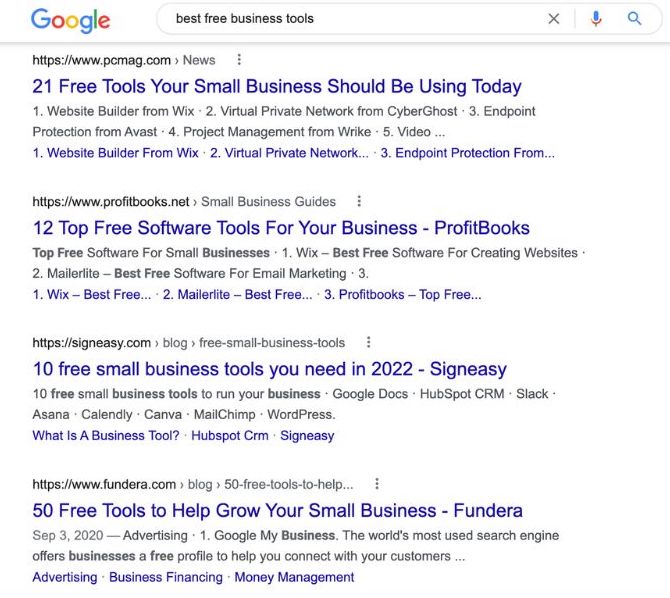
Related: Want to see the best free marketing tools for small businesses? We rounded them up here.
Overcome your top small business challenges
Running a successful small business takes a lot of work. But with a little support, the right tools, and a helpful team, you can successfully run—and grow—your small business year after year.






